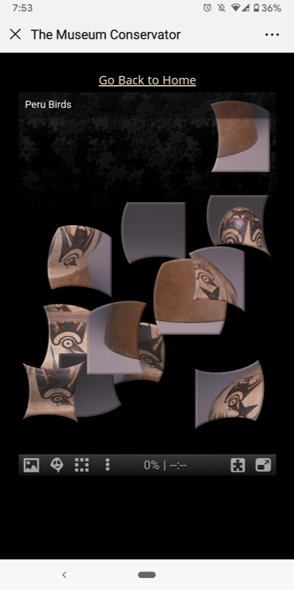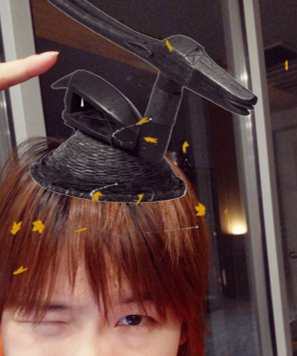Engaging museum visitors with self-guided activities
The Interactive KAM is designed as a series of mini-games that facilitate learning and scaffolds visitors’ perceptions of art in the Krannert Art Museum. By having QR codes or links available in the galleries, visitors can access the games through scanning with their mobile devices. We aimed to create accessible mini-games and activities tailored to objects in the galleries. Through augmented reality and other forms of interactive technology, visitors of all ages can use their phones to discover more information and engage with various pieces of artwork in KAM.
This project was designed and carried out within the timeframe of ten weeks. At the initial stages of this project, we spent a significant amount of time in the galleries identifying artworks and negotiating relevant tools that would execute our visions. We adapted some of the existing ideas from KAM’s education team and created our own versions of them. There were multiple rounds of design and revision as our ideas evolved.
Our desired outcomes were designing systems that are intuitive and interactive for visitors to use. By utilizing our design, we hope to create a more meaningful and fun experience for art museum visitors. Instead of walking around in the galleries aimlessly, visitors will be able to get insights into different artworks throughout their visit. Instead of a one-direction view of the artworks, individuals co-construct meanings and engage on a more personal level.










Our design consists of six mini-games and activities: Art Mystery, Soundsuit in Motion, Wear the Masks, Conservation Lab, Word Game, and Stella Simulator. Below are descriptions of each.
Art Mystery engages visitors with the history of the Krannert Art Museum and the provenance of artworks in the European collection. The pasts of museums and what have the artworks been through before ending up in a museum often remain unknown to visitors. This mini-game provides an opportunity for visitors to gain insight into an art theft at KAM around 50 years ago. Through identifying aesthetic qualities and deductive reasoning, visitors solve questions and are given clues to identify an artwork that was stolen during the KAM art theft. This game serves as an opportunity for visitors to take a closer look at the collection and engage with the art in a playful and interactive way.
Soundsuit in Motion creates an AR experience via the App “Artivive” that allows visitors to get a glimpse of the rhythm of acting Soundsuits. Visitors gain a better understanding of the artist’s vision: Soundsuits are not static sculptures. They are supposed to be worn and performed as a part of Nick Cave’s protest to the world.
Instead of being displayed at an art museum, Masks are worn and performed during religious ceremonies in different regions of Africa. Wear the Masks consists of Snapchat filters that allow visitors to recreate what it is like to actually wear the masks and make deeper connections with the artworks.
Conservation Lab tells the backstage story of Museum works. The chosen artworks date back to around 2000 years ago in the Andean area. Most of them were in pieces when they were discovered by archeologists. Museum conservators cleaned and pieced the objects back and filled in the parts that were missing with clay. This mini-puzzle game allows visitors to act as conservators and piece back all the broken parts of the ancient Peruvian objects.
Word Game provides visitors a chance to engage with the artworks through their own interpretation. Through picking out different nouns and adjectives that can be used to describe the conceptual artworks on display, art is no longer inaccessible. Instead, art is approachable and allows for different interpretations.
Stella Simulator is an interactive whiteboard that allows visitors to drag and drop colorful shapes and create Stella-like designs. Frank Stella was inspired by the colors and shapes of the wooden synagogues. Each artwork was named after a village where the synagogue was located. Sometimes the titles also include a number. He made many different versions of the same artwork, and the number tells us which version we are seeing.


